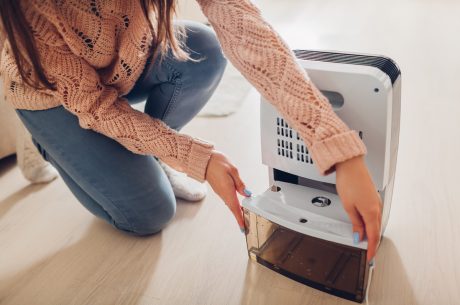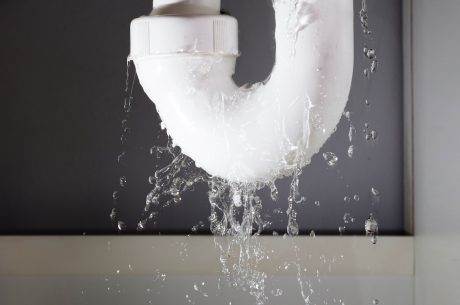Before diving into repairs, ensure your safety. Water damage can create hazardous conditions, such as electrical risks and unstable structures. These dangers can increase exponentially if not addressed promptly and correctly. Here’s what you should do:
- Turn Off Electricity: If safe to do so, switch off the electricity in affected areas to prevent electrocution. Water and electricity are a dangerous combination, and ensuring power is off can prevent accidents. If you’re unsure how to do this, contact your power company for guidance.
- Assess Structural Safety: Check for signs of structural damage. Look for sagging ceilings, cracked walls, or buckled floors. If you’re uncertain about the safety of your property, evacuate and call a professional. Structural issues can worsen over time, so it’s crucial to address them immediately.
- Protect Yourself: Wear protective gear, such as gloves and boots, to minimize exposure to contaminated water. Depending on the source of the water, it may contain harmful bacteria or chemicals. Using protective gear can prevent skin irritation and other health issues.
Stop the Source of Water
Identifying and stopping the source of water is crucial to preventing further damage. This step is often the most critical in mitigating damage and preventing future incidents. Here’s how:
- Locate the Source: Determine whether the water is coming from a burst pipe, roof leak, or another source. Understanding the source helps in addressing the problem efficiently and prevents recurrence. It may be necessary to consult a plumber or a roofer for an accurate diagnosis.
- Shut Off Water Supply: If a plumbing issue is the cause, turn off the main water supply to stop the flow. Knowing the location of your water shut-off valve is essential for every homeowner. This simple act can prevent hundreds of gallons of water from flooding your home.
- Seal Leaks: Use temporary measures like tarps or sealants to prevent further water ingress until professional repairs can be made. Quick action can prevent a small leak from becoming a major problem. Consider having a few basic materials on hand for emergencies.
Document the Damage
Once the immediate danger is managed, document the damage. This step is vital for insurance purposes and can help expedite the claims process. Proper documentation can also serve as a checklist for repairs and restoration.
- Take Photos and Videos: Capture images and videos of all affected areas, including furniture, walls, and floors. Make sure to take pictures from multiple angles to capture the full extent of the damage. This visual evidence can be invaluable when dealing with insurance companies.
- Make Detailed Notes: Write down details about the damage, including the extent and items affected. Include information such as the time and date of the incident, the type of water involved (clean, gray, or black), and any initial actions taken. This thorough documentation can aid in the claims process and ensure nothing is overlooked.
Remove Standing Water
Standing water can quickly lead to mold growth and further structural damage. It is essential to remove it as soon as possible. The longer water remains, the more it can seep into materials and create long-term problems.
- Use Pumps and Vacuums: For significant water accumulation, use pumps or wet/dry vacuums to remove water. These tools can help remove large volumes of water quickly and efficiently. Remember to follow safety guidelines when using electrical equipment in wet areas.
- Mop Up Smaller Puddles: For minor water pooling, use mops and towels to soak up the water. Regular household items can be effective in addressing small areas of water. Regularly wringing out and replacing towels can improve efficiency and prevent further saturation.
Dry and Dehumidify
After removing standing water, focus on drying and dehumidifying the space to prevent mold growth. Mold thrives in damp environments, so reducing humidity is key to preventing its development.
- Open Windows and Doors: Increase ventilation by opening windows and doors to enhance air circulation. Fresh air can help dry out the area more quickly and reduce humidity levels. Weather permitting, allow for cross-ventilation by opening multiple windows or doors.
- Use Fans and Dehumidifiers: Place fans and dehumidifiers in affected areas to speed up the drying process. These devices can significantly lower humidity levels and aid in faster drying. Industrial-grade equipment may be necessary for larger areas or severe damage.
- Remove Wet Items: Take out wet carpets, furniture, and other items to dry separately. Removing these items prevents further water absorption and allows them to dry more effectively. Assess whether items are salvageable or need replacement to prevent future issues.
Clean and Disinfect
Water damage, especially from floods, can introduce harmful bacteria and contaminants. Cleaning and disinfecting are essential to restoring a safe environment. This step ensures that your home is not only dry but also hygienic.
- Use Disinfectants: Clean hard surfaces with disinfectants to kill bacteria and germs. Pay special attention to areas that were submerged in water, as these are most likely to harbor pathogens. Choose a disinfectant appropriate for the surface to avoid damage.
- Wash Fabrics: Clean and sanitize fabrics, such as curtains and clothing, that came into contact with water. Use hot water and suitable detergents to ensure thorough cleaning. Some items may require professional cleaning to remove stains and prevent shrinkage.
Check for Mold

Mold can start growing within 24 to 48 hours after water damage. Early detection is key to prevention. Mold not only damages property but can also pose serious health risks.
- Inspect Regularly: Check for mold in hidden areas, such as behind walls and under carpets. Mold can be sneaky, often growing in places that are out of sight. Regular inspections can catch mold early, making it easier to address.
- Look for Musty Odors: A musty smell often indicates mold presence. If you detect such odors, investigate immediately to find the source. Addressing mold promptly can prevent it from spreading and causing further damage.
Call Professional Water Damage Restoration Services
While DIY steps can mitigate minor damage, significant water damage requires professional intervention. Water damage restoration services offer a comprehensive approach to handling severe damage.
- Expert Assessment: Professionals can accurately assess the extent of the damage and identify hidden issues. They have the training to spot problems that might be missed by the untrained eye, ensuring a thorough evaluation.
- Advanced Equipment: They use specialized equipment, like industrial-grade dehumidifiers and air movers, to ensure thorough drying. This equipment is often more powerful and efficient than consumer-grade options, leading to better outcomes.
- Comprehensive Restoration: Services may include mold remediation, structural repairs, and more. Professionals can coordinate all aspects of restoration, providing a seamless recovery process. Their expertise can ensure that repairs are done correctly and efficiently, preventing future issues.
Prevent Future Water Damage
Once you’ve addressed the immediate aftermath, it’s time to implement measures to prevent future incidents. Prevention is always better than a cure, and taking proactive steps can save you time, money, and stress.
- Regular Maintenance: Regularly inspect roofs, pipes, and drainage systems for potential issues. Early detection of wear and tear can prevent major problems later. Schedule routine maintenance checks with professionals to ensure all systems are functioning properly.
- Install Water Detectors: Consider installing water detection devices to alert you of leaks. These devices can provide early warnings, allowing you to address leaks before they cause significant damage. They are a small investment that can protect against extensive losses.
- Improve Drainage: Ensure gutters and downspouts are clear and direct water away from the foundation. Proper drainage prevents water from pooling around your home, reducing the risk of leaks and foundation issues. Regularly cleaning gutters and downspouts ensures they function correctly.
Conclusion
Water damage can be overwhelming, but taking prompt action can prevent severe consequences like mold and structural issues. Remember to prioritize safety, document the damage, and seek professional help when necessary. By following these steps, you can effectively manage water damage and safeguard your property for the future. Implementing preventive measures can provide peace of mind and protect your home from future water-related incidents.
For expert water and mold restoration services in Alsip, contact our team at PuroClean Disaster Mitigation today!



